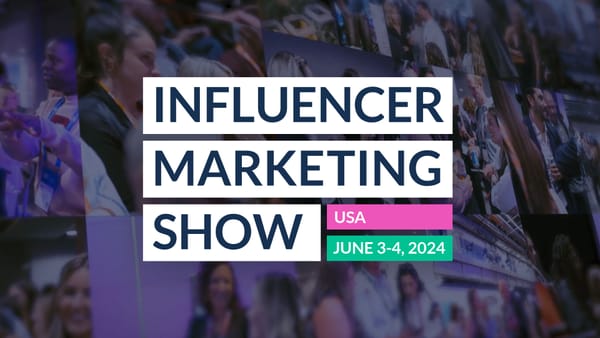As the holiday season approaches, brands will increase their ad spend by almost a third, social commerce strategies will receive rapid rollouts, and marketers will turn to influencers to vouch for and differentiate their brand in an ever more crowded marketplace.
And they will simply be too late.
Rome wasn’t built in a day
The argument for influencer marketing around the festive period is foolproof; consumer spending soars during this time and 60% of shoppers buy products based on influencer recommendations. But entering the fray late in the day will, at best, see your posts skimmed over in favour of something more recognisable, and at worst, make you seem opportunistic.
Yes, influencer marketing is invaluable for brands hoping to stand out from the crowd; influencers are perceived as more trustworthy than brands, they have ready-to-roll, nurtured, and niched audiences and they know exactly how to deliver your message in a way that resonates. They are the embodiment of the modern appetite for peer-to-peer communication. But they’ve got thereby putting in the hours. If brands want to capitalise on their platform then they need to do the same, investing in building a relationship with an influencer and, in turn, their followers.
So let’s tackle the issue head-on: the one-off ad has to go.
Familiarity breeds conversion
The advantages of always-on influencer marketing have always made it the optimal approach, offering brands and influencers time to analyse and optimise their tactics, providing audiences with consistent touchpoints, and bringing the three together to build conversations instead of billboards. However, it’s never more important than in the run-up to Black Friday and Christmas, when advertising channels reach peak congestion and a frenzy of marketing messages descends on lucrative audiences. As personalisation is sacrificed in the race for customer acquisition, brands will find it more challenging than ever to engage prospects.
So, with billions of pounds in revenue on the line and brand loyalty a thing of the past, brands have two windows of opportunity when these revenue goldmines come around.
On the one hand, they can jump into the conversation on the day, armed with a 15% off voucher code and a link sticker in an influencer’s story. Should the right candidate see the story or the feed post – someone who was searching for just your product or service at exactly that time – you’re quids in! However, if that individual or group doesn’t happen across your content then you’re speaking to an audience who don’t necessarily recognise your brand and who likely aren’t aware of the benefits you offer.
Let’s look at route two. You begin pinpointing your influencers in Q1. There is no rush. You have time to identify the absolute best-fit candidates, the perfect blend of mega and micro-influencers. You’re approaching them early so their calendar still has availability. And you’re going to start working with them immediately, opting for a long-term, sustained publishing strategy. Your brand will begin to enter social media users’ peripheral consciousness, familiarity will bloom, and when an influencer recommends your product after three months of regular mentions, there will be a through-narrative that provides context to the recommendation, increasing the authenticity of the experience for followers.
Finally, when Black Friday rolls around or Christmas looms, and your roster of influencers then offer 15% off of the product or service that they’ve been raving about for months, your audience is primed to receive it.
Trust is earned over time
The fact of the matter is that marketing channels are saturated, social media and influencer marketing included. While there certainly was a time in which it was enough to run one-off ads with popular influencers, that time has now passed and the bar set by consumers is continually being raised. With modern shoppers spoiled for choice, brands will have to go the extra mile to convince them that they’re the vendor they should be spending their hard-earned cash with. And while that cash might flow a bit more freely around peak commerce periods, it could just as easily flow to your competitors unless you give it a reason not to.
Influencers can be invaluable in shaping and communicating this messaging, but their credibility and indeed their following relies on the perception of authenticity. Not only are one-off ads an ineffective way of spotlighting your product, but asking influencers to promote a brand that appears once or only sporadically in their feed jeopardises that notion of authenticity and with it, their following. And if influencers lose their following, brands do too.
Next steps
Ultimately, relationships, like all things worth having, take time. Even at Christmas. And while an always-on approach might initially seem like harder work than a one-shot ad, the improvements in your return should be well worth the upfront investment. Further to this, as you continue to foster closer relationships with influencers and they become increasingly familiar with your products or services, your audience’s preferences, and your brand persona, always-on campaigns will require less and less input over time.
With Black Friday and Christmas on the doorstep for 2021, it will seem tempting to rush into influencer marketing with whichever tactic seems most direct. But maybe pause to consider if you might not be better off using the time and resources to get a head start on 2022. Your target audience will certainly thank you for it.









